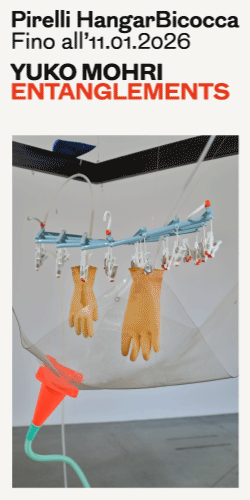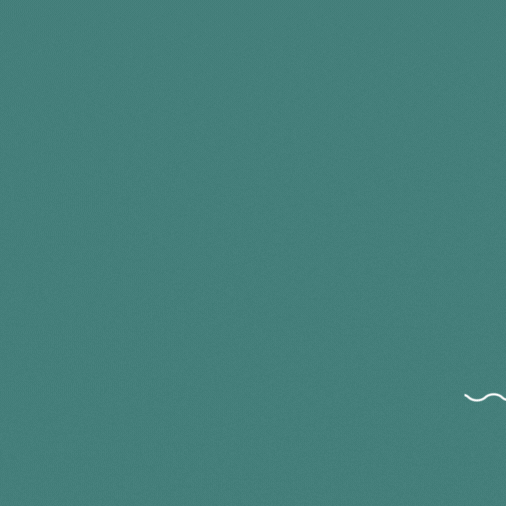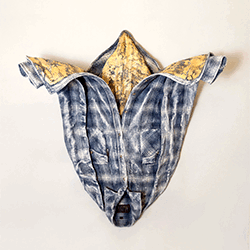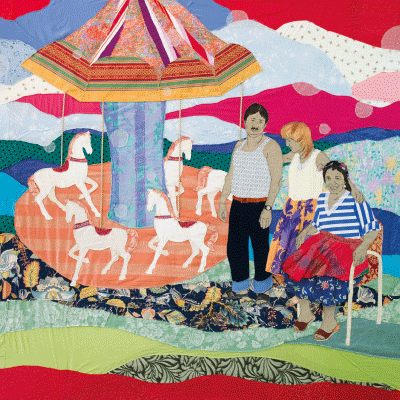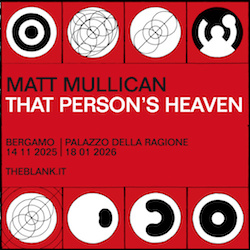[nemus_slider id=”47623″]
—
Segue il testo in italiano
Davide Bertocchi interviews Camille Henrot — #2
The first part of the interview — #1
Davide Bertocchi: Could your film “Grosse Fatigue”, which was presented and awarded at the last Venice Biennale, be defined as a model of representation of world knowledge? Where the intersection of science, religion and mythology creates a metaphor for the human desire to explain and dominate everything? This can be mainly seen through technology, from our smartphone or computer desktop as is shown in the film…
Camille Henrot: Well, yes… I don’t really know what to add, you’ve said almost everything in the question.
DB: Yes but what I wanted to say is that in the film the “window” of the browser that we constantly see maintains a very powerful presence. It opens up on the world from a very intimate position of the desktop and presents a very clear similarity to your idea of a type of “wall”. The wall is almost like a window…
CH: In fact, the idea of using the format of a computer desktop came from the fact that when I was working on the film, I didn’t have my books with me as they weren’t allowed through customs. I didn’t have access to my office and I only had my computer with me. Therefore I was having to work on my bed with my laptop on my knees which made me think of Matisse who used to work on his bed, like that image of him in a bed painting the profile of a woman. I absolutely adore this image. There is also a film by Yves Robert called “Alexandre, le bienheureux” (Very happy Alexander), which tells a story of a man who decides to never leave his bed and trains his dog to bring him everything, he invents ways of doing things without ever having to leave his bed. This idea of never having to move has always fascinated me. It’s interesting really as the idea of not moving is opposite to my personality as I’m a very active person. But at the same time the idea of being a bit like a lizard or rather like a reptile really appeals to me. I like the idea of staying still and spending my day thinking, only making the slightest movements. I’ve often thought about this new form of existence that could be described as “reptile” mode, which means staying in bed with our computer moving as little as possible.
DB: This idea is a bit like the paradigm of technology that allows us to be everywhere without having to move and that brings us closer to the idea of being reptiles; it’s almost the opposite of evolution…
CH: Exactly, the idea of the reptile also came to me when I was reading a book by the English author John Cowper Powys who I admire a lot. The book “In Defence of Sensuality” defines the “Self-Icthyosaurus”. In other words it describes the reptile nature of the human brain, through, for example, our ability to be satisfied with very simple pleasures such as the feeling of sun on our skin. I’m really intrigued by this idea as well as the binary nature of the reptile’s brain. The way it attacks or escapes situations and how its instincts are either black or white. Similar to the way the digital language of a computer works, reptiles follow a language that is binary. Therefore, while thinking of ways to join this idea of the reptile brain with the digital brain, I came up with the idea of using a desktop. In a way this also gave me the opportunity to criticise the way the world can sometimes be perceived as an opened window on your desktop, in my opinion this perception follows on the idea of the museum. This is to say that in a museum everything has its place, hidden away in drawers or behind cabinet displays giving everything a two dimensional form like birds that are sectioned to make them stay still. These drawers represent the windows found on a desktop. It’s a flat and levelling vision of the world which was already formulated a while ago by various philosophers, including Jean Luc-Nancy who wrote a lot about the levelling of the world and how this is the begining if its destruction. There is a strong link between the fear of death, the vanishing, and the desire to build a collection. In fact in order to create a collection one needs to kill and destroy, it’s a bit of a vicious circle. What I wanted to show in the film was that our predisposition to death is what causes death. This is why the voice holds a very important role in this work as it represents the oral culture, the myth, and it shows how this oral culture has been able to protect and continue this tradition without the need to kill.
DB: Do you think that this awareness of oral transmission may be down to the fact that your grandmother was a storyteller as you informed me earlier?
CH: Yes it could be. I’ve always been interested in the way that knowledge can be coded, preserved and transmitted in a story. This is why the Pale Fox interests me, as it’s essentially a story that brings together many concepts that deal with science, agriculture and the astronomy of the Dogon people. The power of storytelling fascinates me. For example the myth of Atlantis demonstrates the power of transmission of information through time, linked to an ancient civilisation, that was able to overcome catastrophes as well as the disappearance of its own civilisation. In the legend of Atlantis, the civilisation that has the most developed form of technology disappears whilst the older civilisation with the less-developed technology survives.
This is something that should really make us think as we live in an era obsessed with technology, a society determined to create a civilisation that will continue to exist for centuries. Objects related to our history are protected in museums or are documented on Google in digital collections providing the highest photo quality. We have this false sense of pride that makes us think that technology can protect us from everything. It’s interesting to see how the mythical tale of Atlantis represents the oral culture as the most powerful force that can overcome natural disasters and wars. An example of this is music, which already functions in a similar way like the humming of a song or the murmuring of a conversation. All these fragments of culture that seem to be vanishing in reality have the potential of outliving the digital images of Google.

DB: Seeing as digital culture is evanescent by nature and is in need of particular support, we only need to think about how easy it is to lose data…
CH: Yes, oral culture is dematerialised and it works on the basis of memory. While digital culture faces oblivion, oral culture continues to function on the basis of memory. Therefore, dematerialisation is not the problem we are facing; the most important thing is not to forget. Maybe one day digital culture could find a way of stimulating the memory, it could work a bit like the game Memory. An example of this is Instagram; the flow of images is so linear that your mind tries to read it as a narrative. I like the fluidity of Instagram, but I’m undecided about social media, it ‘s addictive and influences a big part of our lives in a direction that we still don’t fully understand.
DB: Well I am not even on Facebook, and it feels like being a survivor…
CH: Personally, I don’t feel confident enough as an artist and as a human being to be on Facebook.
DB: To conclude this interview let’s go back for a second to the “Volpe Pallida” (the Pale Fox). I find his role as the main character in the Dogon tale very interesting because he represents a form of chaos but also the creative side…
CH: I love his name in Italian. The story is about Ogo, a god like character who is a bit too proud and who wants to compete against Amma, the Creative Force. At the beginning Amma creates the ancestors who are called “nommo”. Ogo, one of the ancestors, is very impatient and ruins Amma’s plans. In the book everything exists like a pair of twins because only things in pairs can reproduce. Ogo doesn’t want to wait for his sister so after arriving on earth and finding himself on his own he tries to steal a bit of Amma’s placenta to create his sister. Obviously his plan falls through and Amma makes the piece of placenta spin so fast that it becomes a sphere of fire – the sun – from which Ogo burns himself when he tries to take it. Here he becomes the pale fox. Before this transformation, Ogo was a nommo who was represented by the fish symbol like the other ancestors. The story then continues with violent periods involving sacrifices and castrations… it’s a very bloody story.
It is quite difficult to follow as it was told to two anthropologists, there are a few interruptions in the story and it lacks coherence. It has been said that the tale is not completely exact but in my opinion there is no such thing as precision in the African culture because they follow an oral tradition. Therefore a fixed image of the cosmology of Dogon does not exist; instead there are big gaps where lots of things are added or changed. The most important factor of this book is how it has changed the western view of African culture revealing a very complex culture. Similar to the Kabbalistic tradition, it reveals a system that focuses on all themes such as philosophy, mathematics, astronomy and religion. What struck me the most about the story is its poetic force and its drawings; the power and the simplicity of its ideas that contain biological and philosophical truths and this idea of duality that everything exists as twins. This makes me think of the division of cells as well as the idea that disorder forms part of the order. Order and chaos themselves are not able to create the right conditions to allow life to flourish. It is only through the combination of the two that life can proliferate and even then only when the right balance is found.
Translated from Italian by Clara Espinosa
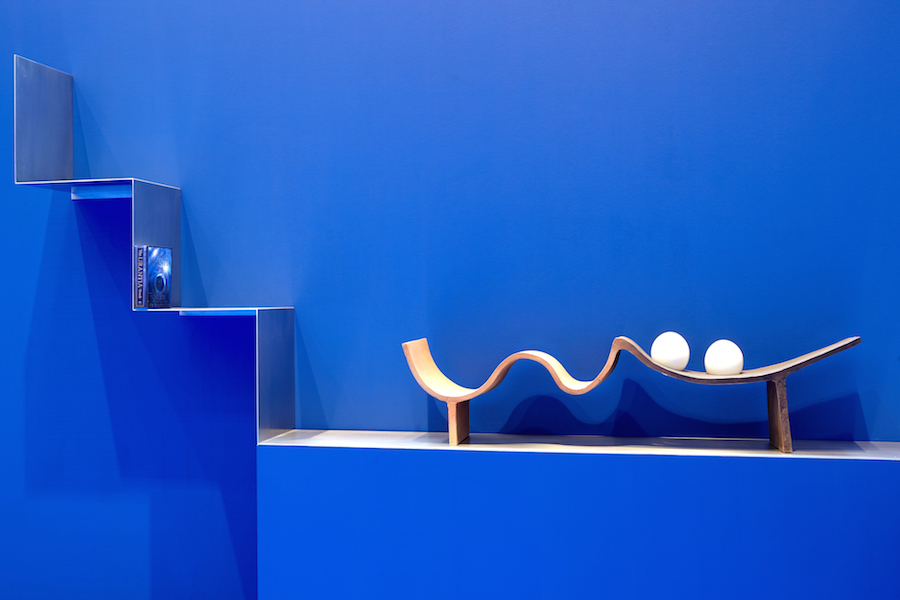
Davide Bertocchi intervista Camille Henrot — #2
Per leggere la prima parte dell’intervista — #1
Davide Bertocchi: Possiamo definire «Grosse Fatigue», il tuo lavoro presentato all’interno della mostra di Massimiliano Gioni, « Il Palazzo Enciclopedico » alla Biennale di Venezia 2013, come un modello di rappresentazione della conoscenza universale dove si articolano scienza, religione, mitologia, e quindi come una metafora del desiderio umano di poter spiegare e dominare tutto? Sopratutto attraverso i mezzi tecnologici a partire semplicemente dal nostro smartphone o desktop, come si vede nel film appunto…
CH: Beh, si… non so cosa aggiungere, hai già quasi detto tutto nella domanda.
DB: Si, ma quello che volevo dire è che in quel lavoro c’e questa presenza molto forte del formato «finestra», del browser, che si apre sul mondo a partire dalla posizione molto personale e intima del proprio desktop e che ora trovo molto vicina anche alla tua idea del formato «muro» di cui mi parlavi. Cioè il muro come fosse una finestra…
CH: Infatti l’idea di utilizzare il formato del computer desktop è venuto un po dal fatto che, quando lavoravo sul film, non avevo i miei libri perché tutto era bloccato alla dogana. Avevo solo il mio computer e non avevo studio. Quindi ho lavorato praticamente nel mio letto con il computer sulle ginocchia e mi veniva in mente l’immagine di Matisse che lavora nel suo letto, sai questa immagine di lui a letto che dipinge un profilo di donna. Mi piace tantissimo questa immagine. Poi c’è un film di Yves Robert che si intitola «Alexandre, le bienheureux» (Alexandre, un uomo felice), che è la storia di un uomo che decide di non uscire dal letto e addestra il suo cane perché gli porti tutto, si inventa meccanismi per fare tutto dal letto. Mi ha sempre affascinata questa idea del non aver bisogno di muoversi, dell’economia del movimento. Ed è divertente perché è esattamente l’opposto alla mia personalità visto che io ho sempre bisogno di muovermi. Ma allo stesso tempo sono molto attratta dalla possibilità di essere un po come una lucertola, come un rettile. Restare fermi e poter pensare tutto il giorno e quando fai un movimento è sempre qualcosa di impercettibile. Ho pensato spesso a questa nuova modalità di esistere che sarebbe il modo «rettile», ovvero, stare a letto con il proprio computer e fare spostamenti minimi.
DB: Che è un po anche il paradigma della tecnologia che ti permette di essere ovunque senza spostarti e che ci porta ad essere più come rettili, come fosse un’evoluzione al contrario…
CH: Esatto. Questa idea del rettile mi è venuta anche leggendo un libro, di un’autore inglese che stimo molto che si chiama John Cowper Powys, dal titolo «In Defence of Sensuality» dove definisce l’«io-ittiosauro», ovvero il modo di essere rettile, e la lontana natura rettile del cervello umano, attraverso la nostra capacità di sentirci appagati con cose molto semplici ad esempio con la sensazione del sole sulla pelle. Mi interessa molto questa idea e anche la natura binaria del cervello rettile, tipo aggredire o fuga, zero e uno. Esattamente come funziona il linguaggio dei computer, un linguaggio digitale e binario. Quindi pensando a come mettere in relazione questa idea del cervello rettile con quello digitale e attraverso tutte queste idee è venuta l’ispirazione di utilizzare il desktop. Poi in un certo senso era anche un modo di criticare questa lettura del mondo attraverso la finestra del computer perché secondo me questo appiattimento non è altro che la continuità del museo. Cioè, la finestra del computer è la continuità del museo nel senso che il museo mette tutto identro cassetti o teche appiattendo tutto come gli uccelli sezionati per farceli stare. Questi cassetti funzionano come finestre del computer. Un appiattimento del mondo che è stato teorizzato già da tempo da molti filosofi, incluso Jean-Luc Nancy che ha scritto molto su questo appiattimento del mondo e di come ciò rappresenti anche un modo per distruggerlo. C’è un legame molto forte tra la paura della morte, dello scomparire, e l’idea di costruire una collezione. Infatti per costruire una collezione hai bisogno di uccidere e di distruggere, è un po un circolo vizioso. Quello che volevo mostrare nel film era che la nostra predisposizione alla morte crea morte. Ed è per questo che la voce ha un ruolo importante nell’opera perché rappresenta la cultura orale, il mito, e come questa cultura orale sia stata in grado di proteggere e continuare una tradizione senza bisogno di uccidere o di appiattire.

DB: E pensi che questa tua sensibilità per la trasmissione orale sia data anche dal fatto che avevi una nonna che faceva la raccontatrice di storie come mi dicevi all’inizio?
CH: Probabilmente si. Mi sono sempre interessata al modo in cui la conoscenza viene codificata, contenuta e trasmessa nel racconto. Proprio per questo mi interessa il Pale Fox che è un racconto che sintetizza tantissime conoscenze, sia scientifiche, sull’agricultura, sull’astronomia del popolo Dogon. Mi affascina questa potenza del racconto. Anche il mito di Atlantide ad esempio ha a che vedere con questo potere di trasmissione nel tempo di informazioni, legate ad una civiltà antichissima, e che può sopravvivere a catastrofi o alla scomparsa della civiltà stessa. Nel mito di Atlantide la civilità che ha la tecnica più sviluppata sparisce mentre quella più primitiva e con un tecnologia piu leggera sopravvive. È qualcosa che ci dovrebbe davvero far pensare perché viviamo in quest’epoca di feticizzazione della tecnologia e abbiamo l’ambizione di costruire una civiltà che può sopravvivere per secoli. I nostri oggetti sono perfettamente protetti nei musei, o documentati su Google in collezioni digitali ad altissima risoluzione con la supponenza di pensare che la tecnologia ci protegge da tutto. Secondo me è interessante nel mito-racconto di Atlantide vedere che invece la cultura più forte che può sopravvivere a cataclismi e guerre è la cultura orale. Per la musica ad esempio funziona già così. In una conversazione o per la canzone che senti canticchiare. Tutti questi frammenti di cultura che danno l’impressione di sparire in realtà hanno magari la potenzialità di sopravvivere molti più secoli delle immagini digitali high definition di Google.
DB: Anche perché la cultura digitale è per natura molto effimera e dipendente da un supporto relativamente fragile. Basti pensare a come sia facile perdere dei dati…
CH: Si, anche la cultura orale è dematerializzata ma però funziona sull’idea di memoria. Mentre il problema della cultura digitale è che va nella direzione dell’oblio. Quindi non è tanto un problema di dematerializzazione. La cosa più importante è non dimenticare. Se, nella cultura digitale, si trova un modo di stimolare la memoria, allora, succede un po come nel gioco del Memory. In un certo senso Instagram è un po così perchè il flusso delle immagini é cosi lineare che la tua mente prova a leggerlo comme una continuità narrativa. Mi piace la fluidità di Instagram ma sono molto prudente con le piattaforme digitali e reti sociali, danno dipendenza e influenzano gran parte della nostra vita in una direzione che ancora non comprendiamo completamente.
DB: Beh, io non sono nemmeno su Facebook e mi sembra di essere un sopravvissuto…
CH: Personalmente penso di essere troppo insicura come artista e come essere umano per essere su Facebook.
DB: Possiamo concludere tornando un attimo sulla Volpe Pallida. Lo trovo molto interessante come personaggio principale del racconto Dogon perché interpreta il caos ma anche la parte creativa…
CH: Mi piace molto il suo nome in italiano. Si tratta di Ogo, un dio-personaggio un po troppo orgoglioso e che vuole competere con Amma la Forza Creatrice. All’inizio Amma crea gli ancestri che si chiamano “nommo” e tra loro c’e anche Ogo, il quale é troppo impaziente e disturba i progetti di Amma. Nel libro “La volpe pallida” tutto esiste come coppia di gemelli, perchè solo le cose che vanno per due possono “riprodursi”. Ma Ogo non vuole aspettare sua sorella. Arrivando sulla terra e trovandosi tutto solo prova a rubare un po della placenta di Amma per creare la sorella. Ovviamente il suo piano non funziona e Amma fa ruotare il pezzo di placenta cosi veloce che diventa una sfera di fuoco – il sole – e Ogo si brucia provando a prenderlo e proprio in questo momento diventa la volpe pallida. Prima Ogo era un nommo rappresentato dello segno del pesce come gli altri ancestri. La storia continua con episodi anche molto violenti di sacrifici e castrazione… é molto cruenta. Il racconto è abbastanza difficile da leggere perché è stato a sua volta raccontato da qualcuno ai due antropologi e ci sono delle interruzioni e incoerenze. Si dice che non sia esatto, ma secondo me, non c’è esattezza nella cultura africana perché è appunto una cultura orale. Quindi non esiste un’immagine fissa della cosmologia Dogon ma solo grandi linee su cui tante cose si sono aggiunte o modificate. La cosa davvero importante di questo libro è quella di aver cambiato l’idea occidentale della cultura africana rivelando una cultura molto complessa, come il sistema cabalistico, un sistema che racchiude tutto, filosofia, matematica, astronomia, religione. Quello che mi ha colpito sono la forza poetica della storia e dei disegni, la potenza e la semplicità delle idee che sono insieme verità filosofica e verità biologica: questa idea della dualità, che tutto esista come gemello, mi fa pensare alla separazione delle cellule. Anche l’idea del disordine che fa parte dell’ordine. L’ordine e il caos da soli non possono creare le condizioni per lo sviluppo della vita ma solo attraverso la combinazione di entrambi e il loro delicato equilibrio essa può esistere.

